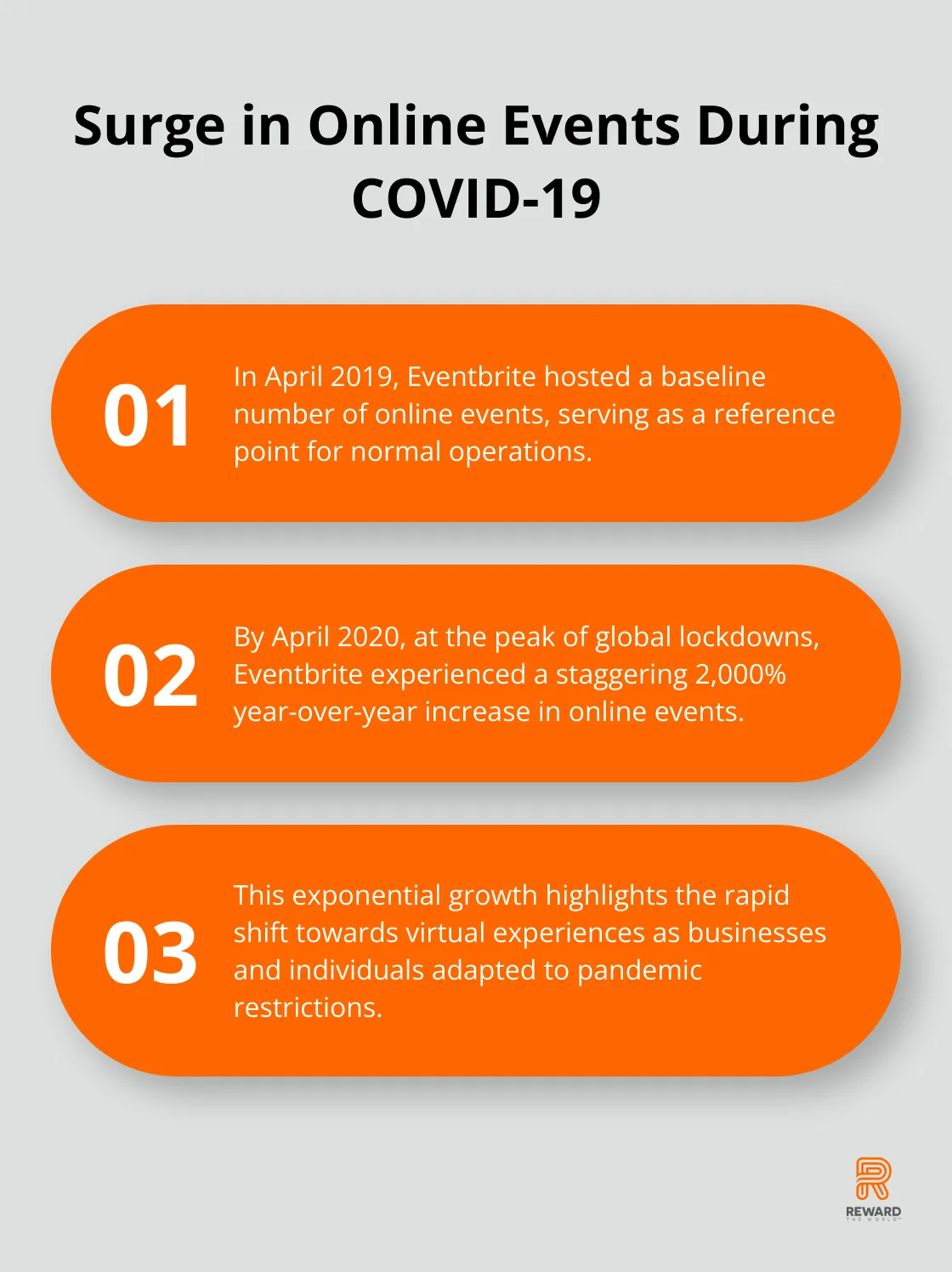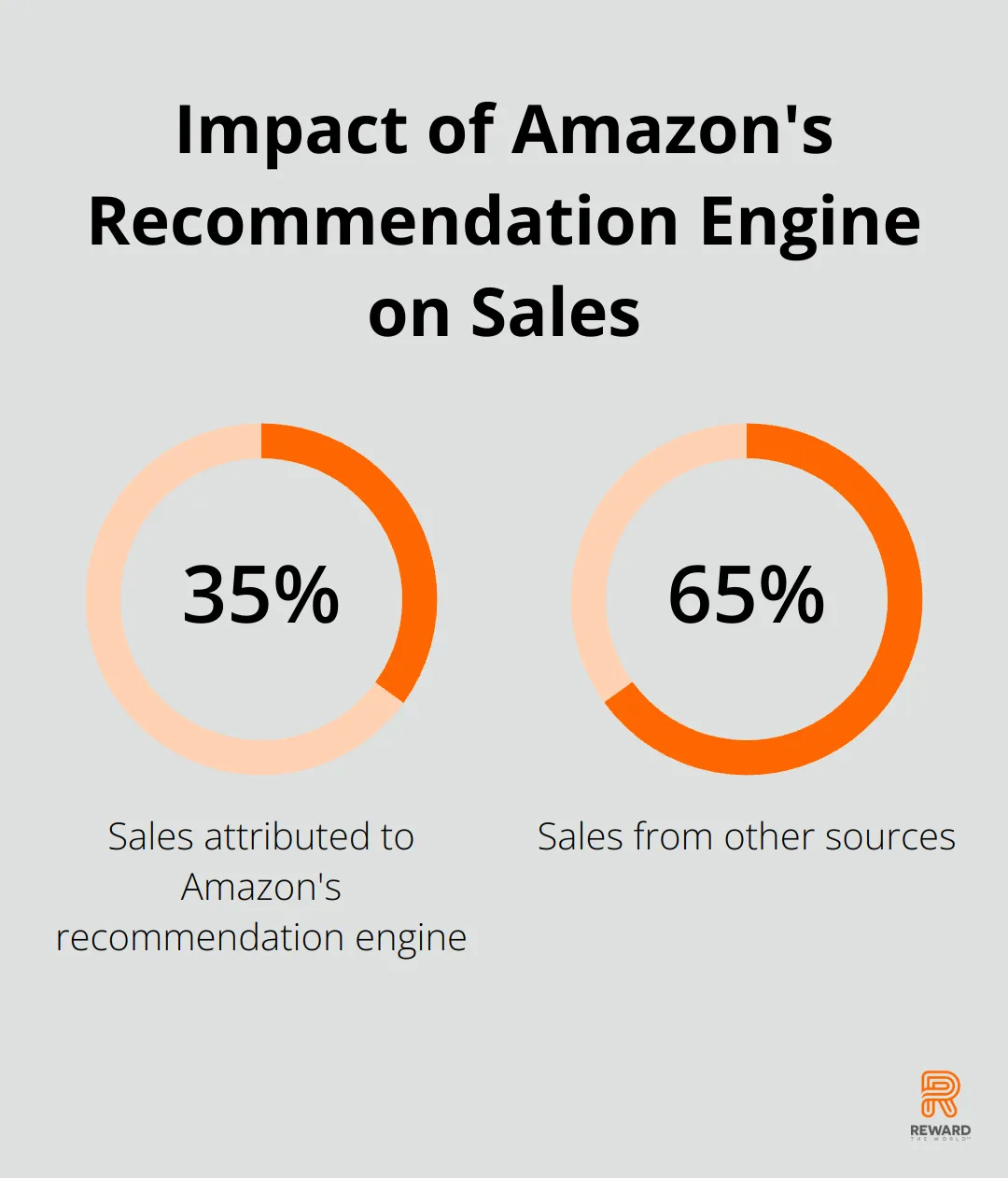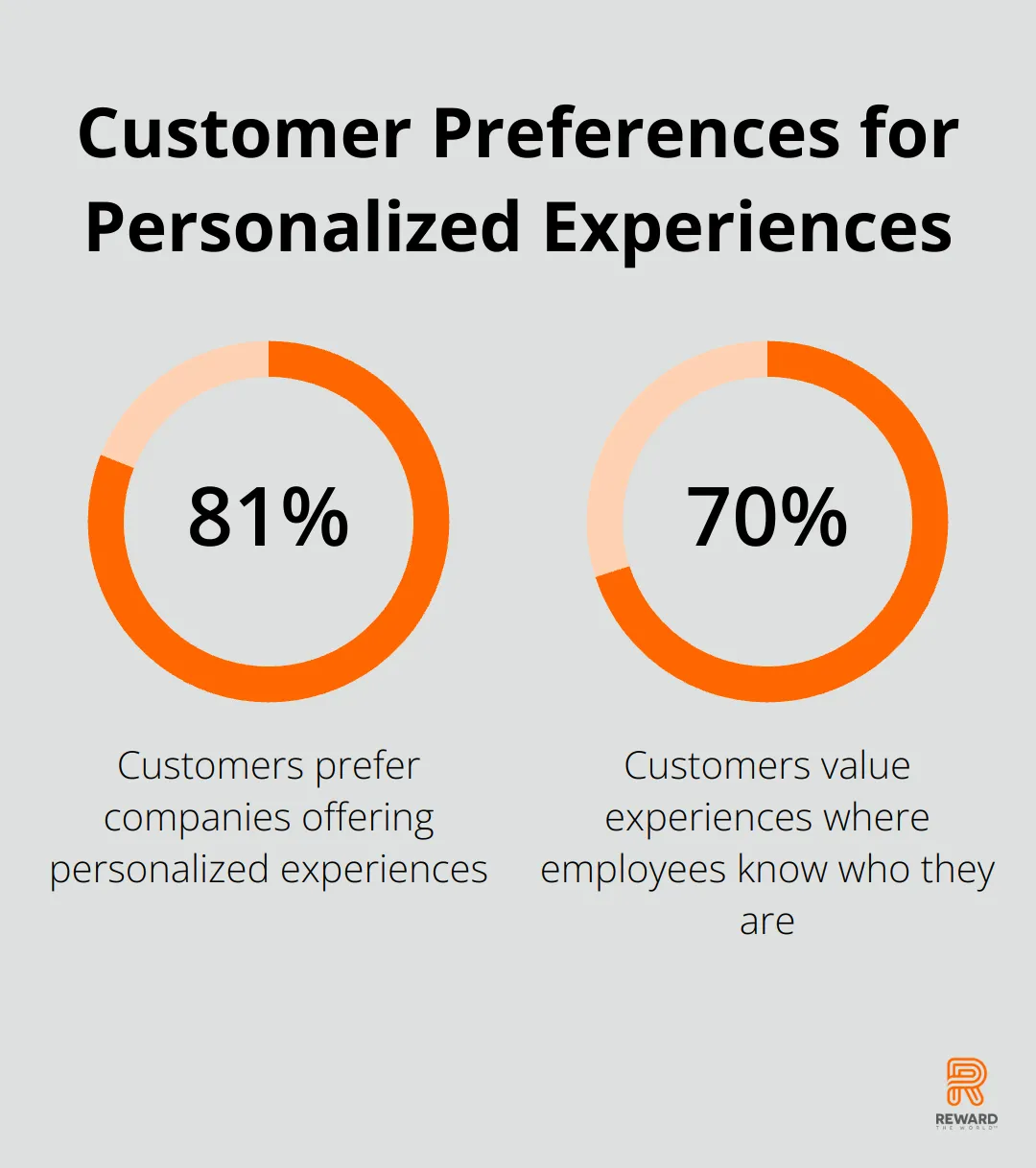
Virtual experiences are reshaping the landscape of customer engagement. From virtual product launches to immersive brand events, these digital interactions are becoming increasingly popular.
At Reward the World, we’ve seen a surge in companies incorporating virtual rewards into their loyalty programs. This trend is not just a passing fad; it’s a powerful tool for building lasting customer relationships.
Virtual Experiences: The New Frontier in Customer Engagement
Defining Virtual Experiences
Virtual reality’s main impacts are improved communication with consumers, created an immersive experience, and enhanced customer loyalty. These experiences transform how brands connect with customers, ranging from virtual product launches to immersive brand events. They have become a cornerstone of modern customer engagement strategies.
Unprecedented Market Growth
The virtual experience market has witnessed explosive growth. The luxury jewelry market in Germany is expected to reach a projected revenue of US$ 1622.0 million by 2028, with a compound annual growth rate of 6.8%. This surge signifies a fundamental shift in business-customer interactions.
COVID-19’s Accelerating Effect
The COVID-19 pandemic acted as a powerful catalyst for virtual experiences. As physical interactions became limited, businesses quickly adapted to digital alternatives. Eventbrite reported a staggering 2,000% year-over-year increase in online events in April 2020, at the peak of global lockdowns.

Industry-Wide Applications
Retail giants like Walmart have embraced virtual experiences, introducing virtual fitting rooms for digital clothes try-ons. In the automotive sector, companies such as BMW offer virtual test drives, allowing potential buyers to experience their vehicles without visiting a showroom.
Technology’s Role in Enhancing Engagement
Advanced technologies make virtual experiences more immersive and engaging. Augmented Reality (AR) and Virtual Reality (VR) lead this revolution. IKEA’s AR app (which allows customers to visualize furniture in their homes before purchase) exemplifies how these technologies enhance the shopping experience.
Impact on Customer Loyalty
Virtual experiences prove to be powerful tools for building customer loyalty. Evolving shopper behavior and AI-powered experiences are redefining brand connection, loyalty, innovation, and growth. This underscores the potential of virtual experiences in fostering long-term customer relationships.
The integration of virtual rewards into loyalty programs aligns with the broader shift towards digital engagement strategies. It offers businesses a cost-effective and scalable way to connect with their audience. As we move forward, the question arises: How do these virtual experiences specifically enhance customer loyalty? Let’s explore this in the next section.
How Virtual Experiences Boost Customer Loyalty
Breaking Geographical Barriers
Virtual experiences revolutionize customer loyalty programs by eliminating geographical constraints. Customers can now engage with brands from anywhere in the world, leading to higher participation rates in loyalty programs. Modern loyalty programs are integrating AI and data analytics to personalize customer experiences, ensuring relevance and effectiveness.
Harnessing Data for Personalization
The wealth of customer data generated by virtual experiences enables brands to tailor their offerings with unprecedented accuracy. Amazon’s recommendation engine accounts for 35% of the company’s total sales. This level of personalization not only enhances customer satisfaction but also increases the likelihood of repeat purchases.

Creating Unforgettable Brand Moments
Virtual experiences offer unique opportunities for brands to leave lasting impressions. Nike’s SNKRS app uses AR to create scavenger hunt-like experiences for limited edition sneakers, which has not only boosted sales but also significantly increased brand engagement.
Enhancing Customer Retention
Companies that incorporate virtual experiences into their loyalty programs often see substantial improvements in customer retention rates. These digital interactions prove to be powerful tools for fostering long-term customer relationships and driving brand loyalty.
The Future of Customer Engagement
As technology continues to evolve, we can expect even more innovative ways for brands to engage with their customers virtually. The role of digital interactions in building lasting customer relationships will only grow stronger. This shift towards virtual experiences marks a new era in customer loyalty strategies, one that promises to reshape how brands connect with their audience in the digital age.
The success of virtual experiences in boosting customer loyalty raises an important question: How can businesses effectively implement these strategies in their loyalty programs? Let’s explore some successful case studies and best practices in the next section.
Implementing Virtual Experiences in Loyalty Programs
Transforming Customer Engagement
Virtual experiences are revolutionizing loyalty programs, offering innovative ways to engage customers and build enduring relationships. Digitalization is transforming customer loyalty programs, replacing physical card-based, points-per-purchase models with more app-based programs that integrate digital experiences.
Successful Case Studies
Sephora’s Virtual Artist app exemplifies effective virtual experience implementation. This case study highlights how the app has helped to boost sales both online and in-store, with further educational content available on Sephora’s platform.
Starbucks Rewards program successfully integrated virtual experiences through its mobile app. The app’s features (including mobile ordering and personalized recommendations) contributed to a 16% year-over-year increase in active loyalty program members in 2022.
Best Practices for Integration
Consistency is paramount when integrating virtual experiences into existing loyalty programs. The virtual elements should align with your brand identity and complement your existing loyalty structure.
Personalization plays a critical role. Use data from virtual interactions to customize rewards and experiences to individual preferences. A study found that 81% of customers prefer companies that offer a personalized experience, and 70% say a personalized experience in which the employee knows who they are.

Gamification can significantly enhance engagement. Nike’s SNKRS app incorporates gamified elements (like virtual scavenger hunts for limited edition releases), resulting in increased user engagement and sales.
Measuring ROI
To assess the ROI of virtual experiences in customer loyalty, focus on key metrics such as customer retention rate, average order value, and frequency of purchases.
Engagement metrics specific to virtual experiences, such as time spent in virtual environments or frequency of virtual interactions, can provide valuable insights into the effectiveness of these initiatives.
Customer feedback is essential. Conduct regular surveys to gauge satisfaction with virtual experiences and their impact on brand perception.
Businesses implementing virtual experiences in their loyalty programs often see a significant increase in customer retention rates (some report up to 22% improvement).
Future Trends
The success of virtual experiences in loyalty programs stems from their ability to create meaningful, personalized interactions that add value to the customer’s journey. As technology evolves, so will the possibilities for engaging customers in innovative ways. Augmented and virtual reality technologies may soon allow for immersive, personalized reward experiences.
Final Thoughts
Virtual experiences have revolutionized customer loyalty strategies. These digital interactions reshape business-customer connections by eliminating geographical barriers, personalizing rewards, and creating memorable brand moments. Success stories from companies like Sephora and Starbucks highlight the tangible benefits of integrating virtual experiences into loyalty programs.
The future of virtual experiences in loyalty programs promises even more immersive and personalized interactions. Advanced technologies will offer customers increasingly engaging and interactive rewards, blending digital and physical worlds. Businesses should create experiences that align with their brand identity and add genuine value to customers’ lives.
Reward the World offers a wide range of virtual rewards that can integrate seamlessly into existing loyalty programs. Our platform provides exciting virtual experiences that foster long-term loyalty and drive business growth. The potential of virtual rewards in customer loyalty programs remains boundless, allowing businesses to create more engaging and effective strategies that resonate with modern consumers.
